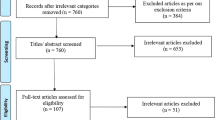Abstract
Taxis are considered one of the most convenient means of transportation, especially when people have to travel off-route, where public transportation is not a feasible option, and also when they need to reach a destination according to what is most convenient for them. However, many issues exist about taxi services, such as the problems of passengers who are unable to get taxi service at the location of their choice, or problems concerning when they need the taxi service to arrive. These problems may be due to the unavailability of the taxi at that particular location or due to the taxi driver not wanting to provide service. A taxi driver may not want to provide service to a potential passenger, because they may have preferences on the direction and areas they want to go or because of the different types of service zoning. Understanding the behaviors of taxi drivers and the characteristics of the trip/travel might be helpful to solving such issues. In this study, we conducted an analysis from a questionnaire survey and large-scale taxi probe data to understand taxi service behavior, travel characteristics, and to discover taxi service zoning characteristics. As a result, four types of taxi service zones including isolated zones, interactive zones, special service zones, and target zones were encountered. Travel characteristics were calculated and analyzed at different criteria, such as weekdays, weekends, and various time windows in a single day. The result of these characteristics was explained according to their similarities and dissimilarities in each type of zone. The discovery of the different zones and their respective definitions might be a good initiative for further development of a policy for taxi drivers to provide better service for passengers.





















Similar content being viewed by others
References
D. of L. T. Transport Statistics Sub-Division, Planning Division, “Number of Vehicle Registered in Thailand as of 30 November 2017,” Department of Land Transport, 2016. [Online]. https://www.m-society.go.th/article_attach/21789/21395.xls. Accessed 30 Mar 2018.
D. of E. and S. A. United Nations, “The World’s Cities in 2016,” United Nations, Department of Economic and Social Affairs, 2016.
N. E. in B. Ministry of Foreign Affairs, “Tourism industry in Thailand,” Bangkok, 2017.
Qian, X., & Ukkusuri, S. V. (2015). Spatial variation of the urban taxi ridership using GPS data. Applied Geography, 59, 31–42.
Yang, Z., Franz, M. L., Zhu, S., Mahmoudi, J., Nasri, A., & Zhang, L. (2018). Analysis of Washington, DC taxi demand using GPS and land-use data. Journal of Transport Geography, 66, 35–44.
Liu, X., Gong, L., Gong, Y., & Liu, Y. (2015). Revealing travel patterns and city structure with taxi trip data. Journal of Transport Geography, 43, 78–90.
Zheng, Z., Rasouli, S., & Timmermans, H. (2014). Evaluating the accuracy of GPS-based taxi trajectory records. Procedia Environmental Sciences, 22, 186–198.
Kim, K. (2018). Exploring the difference between ridership patterns of subway and taxi: Case study in Seoul. Journal of Transport Geography, 66, 213–223.
Cuevas, V., Estrada, M., & Salanova Maria, J. (2015). Management of on-demand transport services at a urban context: Barcelona case study. Transportation Research Procedia, 13, 13.
Dachyar, M., & Rusydina, A. (2015). Measuring customer satisfaction and its relationship towards taxi’s service quality around capital City Jakarta. International Journal of Engineering & Technology, 15(1), 24–27.
Thadphoothon, J. (2017). A study on thai taxi drivers’ cross-cultural. Communication Problems and Challenges, 26(Icefs), 366–373.
Zhang, S., & Wang, Z. (2016). Inferring passenger denial behavior of taxi drivers from large-scale taxi traces. PLoS One, 11(11), 1–21.
A. Peungnumsai, A. Witayangkurn, N. Masahiko, A. Ayumi, R. Saurav, & B. R. Ghimire. (2017). Bangkok taxi service behavior analysis using taxi probe data and questionnaire survey. Association for Computing Machinery ACM. https://doi.org/10.1145/3092090.3092117
S. Ranjit, M. Nagai, I. Rittaporn, T. Ajjanapanya, F. Hilding, A. Witayangkurn, & R. Shibasaki. (2014). GPS enabled taxi probe’ s big data processing for traffic evaluation of Bangkok using Apache Hadoop distributed system. Asian Transportation Research Society Symposium, 291–296.
A. Afian, A. Odoni, & D. Rus (2015) Inferring unmet demand from taxi probe data. IEEE Conference on Intelligent Transportation Systems, Proceedings ITSC, 2015, 861–868.
Dimitriou, L., Kourti, E., Christodoulou, C., & Gkania, V. (2016). Dynamic estimation of optimal dispatching locations for taxi services in mega-cities based on detailed GPS information. IFAC-PapersOnLine, 49(3), 197–202.
S.-H. Lee, B.-W. Lee, & Y.-K. Yang. (2006). Estimation of link speed using pattern classification of GPS probe car data. Lecture Notes in Computer Science (including Subser. Lect. Notes Artif. Intell. Lect. Notes Bioinformatics), 3981(LNCS), 495–504.
Hunt, J. D., & Stefan, K. J. (2007). Tour-based microsimulation of urban commercial movements. Transportation Research Part B: Methodological, 41(9), 981–1013.
He, F., & Shen, Z.-J. M. (2015). Modeling taxi services with smartphone-based e-hailing applications. Transportation Research Part C: Emerging Technologies, 58, 93–106.
Wan, X., Kang, J., Gao, M., & Zhao, J. (2013). Taxi origin-destination areas of interest discovering based on functional region division. 2013 3rd International Conference on Innovative Computing TechnologyINTECH, 2013, 365–370.
Wang, Y., Qin, K., Chen, Y., & Zhao, P. (2018). Detecting anomalous trajectories and behavior patterns using hierarchical clustering from taxi GPS data. ISPRS International Journal of Geo-Information, 7(1), 25.
Chen, Z., Gong, X., & Xie, Z. (2017). An analysis of movement patterns between zones using taxi GPS data. Trans GIS, 21(6), 1341–1363.
Acknowledgements
This research with taxi probe data was partially supported by Toyota Tsusho Nexty Electronics (Thailand) Co., Ltd. and the Asian Institute of Technology, Thailand, under the Remote Sensing and Geographic Information System Department. We would also like to acknowledge the Center for Spatial Information Science at the University of Tokyo, Tokyo, Japan, for research support.
Author information
Authors and Affiliations
Corresponding author
Rights and permissions
About this article
Cite this article
Peungnumsai, A., Witayangkurn, A., Nagai, M. et al. A Taxi Zoning Analysis Using Large-Scale Probe Data: A Case Study for Metropolitan Bangkok. Rev Socionetwork Strat 12, 21–45 (2018). https://doi.org/10.1007/s12626-018-0019-4
Received:
Accepted:
Published:
Issue Date:
DOI: https://doi.org/10.1007/s12626-018-0019-4




